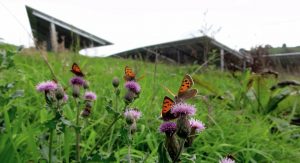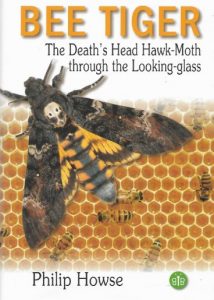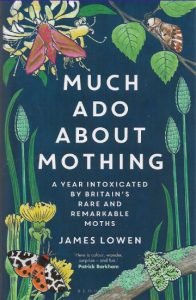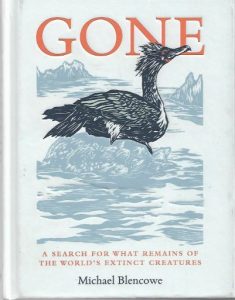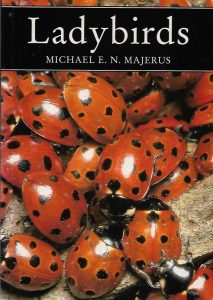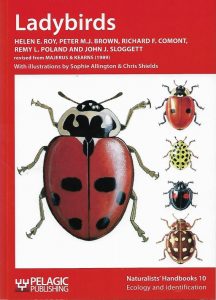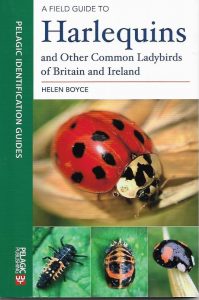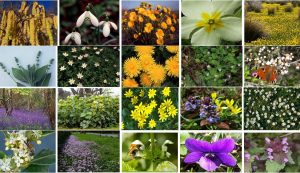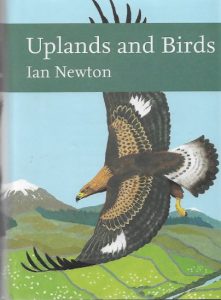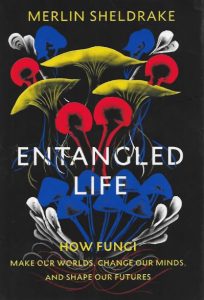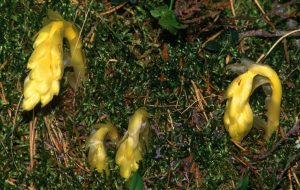Solar arrays – what’s the problem?
Villagers, including ramblers, are increasingly expressing concern about solar arrays in the community. Here are the ecology issues.
But first, here is my background: I was the ecologist on 60 of the 1000 large scale solar farms in England in Wales. Locally in East Sussex I was the ecologist for the Pashley Farm (Ninfield) solar farm.
Solar Ecology Facts:
- All these large solar farms are becoming nature reserves in their own right.
- This is because they were only granted planning permission on the basis of addressing ecological planning Conditions.
- The Conditions were for enhancements such as ponds, beetle banks, reptile and amphibian shelters, bird and bat boxes, badger swing gates, log piles, hedgehog homes, new hedgerows, buffer zones, wildflower meadows.
- Note: Even without enhancements the biodiversity goes up from year one, as the solar farms are all fenced and secure and wildlife moves in naturally.
- Solar farms / arrays should only go on poor grade soil land, or brownfield, not Grade 1 or 2 (so as not to take away any food production). And never in protected areas such as AONBs, SSSIs or nature reserves (e.g. such as the one proposed inside the Hastings Country Park nature reserve). There are advices and codes (see bibliography).
- There is little adverse environmental impact from solars, as they above the ground on posts, and in many cases grazed by sheep below, so farming continues as normal. Soil conservation is assured.
- There appears to be no adverse environmental impact on wildlife (birds) from ‘glare’ (see refs).
- Planning permission for solars is granted for 25 years in most cases (some exceptions).
- There is usually a Condition to restore the site back to what it was – ‘to revert it to its original condition’ (typically oilseed rape, or winter wheat); it will be a conservation nightmare as it will have become biodiverse through the conditioned enhancements.
- Thus solar farms are nature reserves – all 1000 of them. Fenced and secure, where wildlife thrives naturally and has been deliberately encouraged.
Access – Rambling
Solar farms are mostly not open access as they are on private land. With the loss of the Feed in Tariff (FIT), many local authorities are maximizing their own council land, realising they could provide community electricity and sell it. Similarly, villagers are also creating their own community solar arrays. Where footpaths and bridlepaths are beside, or through, a solar farm, then this can always be accommodated in the design – creating a safe and fenced-off walkway. Remember all solar farms are dangerous ‘power stations’. See aerial Google.maps for walkways through solar farms as in the Fareham area of Hampshire. Ecological interpretive boards were provided there to help observe flora and fauna.
Monitoring planning applications – what you can do
There is no ecological objection to solar arrays on private land – they can only be good for biodiversity especially with enhancements.
Pros:
i) clean, sustainable energy;
ii) land protected from other development for 25 years – a benefit! Solars are temporary.
Cons: eyesore?? See below – participate in the planning process
When consulting planning applications for solar arrays then it is best to:
- Ensure that the site has a Phase 1 Habitats Survey to determine any protected species present e.g. badgers, newts.
- If protected species present, what avoidance or mitigation is applied?
- Ensure that application design plan incorporates each enhancement.
- Ask for a bund to restrict visual intrusion where necessary.
- Ask for a screening hedgerow (native species – oak, holly, field maple, hornbeam). (great opportunity here for insisting on filling gaps in hedgerows – good for wildlife corridors).
- Remind LPAs to have a generous buffer (e.g.10m) between arrays and protected areas such as Ancient woodland (local policies often apply), and instigate wildlife enhancements such as in 3) above.
- Protect all single trees on site – they can be accommodated on most solar farms,
- Ensure badger gates are incorporated where badgers are present (see 1,2).
- Ensure developer adheres to best practices (see Biblio).
- Does the connection to the grid go through badger setts (can be up to 1km long), or through or past protected habitats etc.
- Ask for an Interpretive board to explain what wildlife there is to be seen.
Publications on solar arrays and biodiversity by John Feltwell (2013-2015)
Feltwell, J. 2013a. Are photovoltaic solar arrays an influencing factor in avian mortality? The Newsletter of The Kent Field Club. February 2013. Number 77, p.18-27.
No impact on birds
Feltwell, J. 2013b Solar Farms and Biodiversity. Guest blog on Solar Power Portal. 16 September 2013. http://www.solarpowerportal.co.uk/guest_blog/solar_farms_and_biodiversity_2356
Solar farms boost biodiversity, even make nature reserves.
Feltwell, J. 2013c Résumé of solar farms in England and Wales. Briefing given at National Trust roundtable, 17 September 2013. http://www.solar-trade.org.uk/solarFarms.cfm
Feltwell, J. 2013d. Solar farms for bumblebees. Buzzword, The Bumblebee Conservation Trust’s Members Newsletter. November 2013. Issue 23, p.13-14.
Solar farms excellent for bumblebees and other insects
Feltwell, J. 2013e. Biodiversity on solar farms – building tomorrow’s solar farms. Solar Business Focus UK. Volume 10 – 2013. 6-7.
Solar farms boost biodiversity, even make nature reserves. Solar are the new ‘fallow’
Feltwell, J. 2013f. A comparative biodiversity study of a working solar farm and a wheat field in West Sussex, July- November 2013. (Unpublished Report, dated 7 December 2013).
Increased biodiversity on a solar farm compared to an organic wheat field
Feltwell, J. 2014a. Solar farms: gain or grain? Solar Business Focus UK. Volume 11 – 2014. p.40-41.
Solar farms do not take more than 0.14% away from the UK’s agricultural crops
Feltwell, J. 2014b Observations on the effects of photovoltaic solar panels on invertebrates at Ebbsfleet Farm, Sandwich, Kent 2010-2012. The Newsletter of The Kent Field Club. Number 79.
February 2014. p.4-17. No impact on invertebrates (there are 32,000 terrestrial inverts in Britain)
- E. Parker and L. Greene (with Feltwell, J. 2014c as co-contributor) BRE (2014) Biodiversity Guidance for Solar Developments. Eds. G. E. Parker and L. Greene. 9pp.
Essential reading for all developers and planners…. Introduction of the BMP (Biodiversity Management Plan).
Feltwell, J. 2014d, reviewed by John Arthur LLP. Solar farms and eco-law. E-Law, Issue 84 (September-October) pp.27-30. An On-line publication by UK Environmental Law Association.
An up to date résumé of solar farms and UK and EU law
Feltwell, J. BLOG on solar farms and biodiversity http://www.britishrenewables.com/landowners/blog/
13 Nov 2014 Thoughts on Biodiversity, 15 Dec 2014 Sustainable Solar Farms, 15 Jan 2015 NPPF and Biodiversity
Bibliography
BRE (2014) Agricultural Good Practice Guidance for Solar Farms. Ed J Scurlock, http://isea.co.com/news-docs/Agricultural- Good-Practice-Guidance-for-Solar-Farms.pdf
(retrieved 28 Oct 2021)
Evidence review of the impact of solar farms on birds, bats and general ecology 2016 (NEER012) file:///C:/Users/John/Downloads/NEER012%20Evidence%20review%20of%20the%20impact%20of%20solar%20farms%20on%20birds,%20bats%20and%20general%20ecology%202016.pdf (retrieved 28 Oct 2021)
Dr John Feltwell, A Wildlife Matters Flier dated 29 Oct 2021 http://wildlifematters.com – free to circulate
